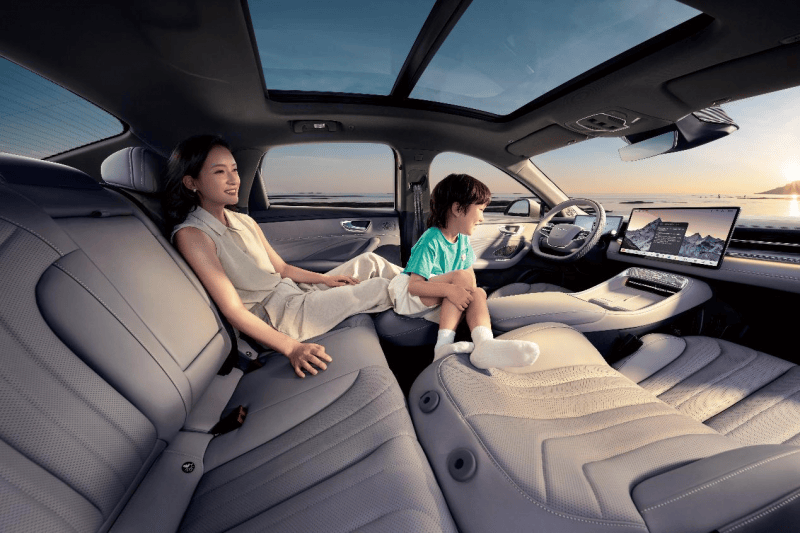The Doubao·Deep Thinking large model is now in mass production! On September 17, the SAIC Roewe M7 DMH was officially launched, marking the global debut of the Doubao·Deep Thinking model, bringing a truly “deep-thinking AI smart cabin”.
With the capabilities of the Doubao·Deep Thinking model, the SAIC Roewe M7 DMH can deeply interpret users’ vague commands and, combined with long-term memory capabilities, infer the user’s true intentions. The Roewe M7 also opens the most vehicle control ports in the industry, enabling it to execute complex vehicle control commands in sequence, further refreshing the underlying logic of human-vehicle interaction and upgrading the experience from command-driven to a more “human-like” natural interaction.
Equipped with the Doubao·Deep Thinking model, the Roewe M7 DMH possesses vague semantic understanding capabilities, accurately interpreting inverted sentences, double negatives, and multi-intent commands. It can also precisely capture vague needs like “I want to take a nap,” achieving a level of deep thinking akin to human understanding. Notably, the vague semantic understanding feature of the Roewe M7 DMH has the highest scene coverage in the industry, encompassing 15 key driving scenarios, transitioning from “command-driven” to “intention-driven”.
The industry-leading memory capability ensures privacy while remembering vehicle status, geographical location, and user interaction history. It also supports contextual memory, which includes local, traditional cloud, and large model forms. For example, if a user has previously mentioned, “I want to lose weight,” the vehicle’s system will proactively suggest “light meal” options when recommending restaurants. This long-term memory capability transforms the vehicle from a cold machine into a “best partner” that gradually understands your habits and deeply comprehends your needs.

Roewe M7 DMH
Additionally, based on the Doubao·Deep Thinking model, the Roewe M7 DMH has achieved complex vehicle control capabilities. Users only need to say a single sentence, and the vehicle system can understand the user’s “subtext,” breaking down multiple vehicle control needs in complex scenarios. For example, saying “help me put the child to sleep” could previously only trigger “tell a bedtime story,” but now it can execute multiple tasks such as “increase temperature, decrease airflow, close windows, lower voice volume, and tell a bedtime story” all in one command. The Roewe M7 DMH boasts the most vehicle control ports in the industry, providing solid support for a truly intelligent experience.
As AI technology matures, user demands for smart vehicles are evolving from “being able to interact” to “understanding me better.” In line with this trend, SAIC Roewe has established deep cooperation with Volcano Engine, tightly integrating the advanced intelligent capabilities of the Doubao large model with Roewe’s overall vehicle underlying system, aiming to create a smarter travel experience that better understands users and is closer to their lives.返回搜狐,查看更多

